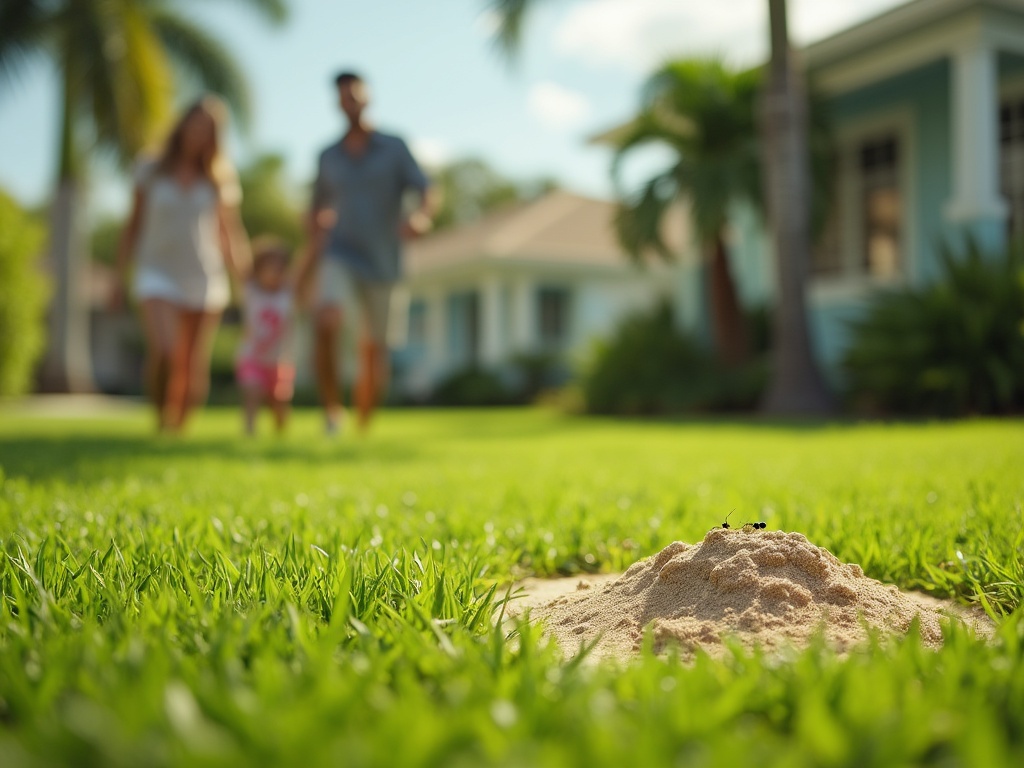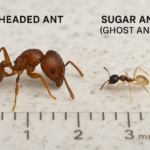What Really Attracts Fire Ants to Your South Florida Yard?
The scene is a familiar South Florida nightmare: one minute your child or dog is playing on the lush green grass; the next, they’re screaming in pain, covered in the fiery, painful stings of red imported fire ants. These invasive pests are more than a nuisance; they’re a threat to our outdoor lifestyle. Understanding what attracts fire ants is the first, most crucial step in reclaiming your yard with safe, effective, and holistic strategies that protect your family and the local ecosystem of Miami-Dade and Broward Counties.
The Unwelcome Guest: Why Fire Ants Love Florida
Fire ants (Solenopsis invicta) thrive in the South Florida climate. Our warm, humid weather provides the perfect year-round conditions for them to forage, breed, and build their infamous mounds. Unlike native species, red imported fire ants are aggressive, highly adaptable, and drawn to specific environmental cues in your yard.
What Attracts Fire Ants? The Top Culprits in Your Yard
Several key factors turn your property into a five-star resort for fire ant colonies.
1. Food Sources: The #1 Invitation
Fire ants are opportunistic omnivores. They are attracted to:
- Other Insects: They prey on grubs, ticks, flea larvae, and other arthropods. A lawn with an existing insect problem is a prime target.
- Sweet Substances: Honeydew produced by aphids and scale insects on plants is a favorite. They will also forage for spilled soda, juice, or ripe fruit from trees.
- Proteins and Fats: Grease spills from outdoor grills, pet food bowls left outside, and even the nutrients from recently applied organic fertilizers can draw them in.
2. Moisture and Irrigation Issues
Fire ants need water to survive. They are often found nesting near consistent water sources.
- Overwatered lawns
- Leaky spigots or irrigation systems
- Poor drainage creating damp soil
- Pet water bowls
3. Optimal Nesting Grounds
They prefer to build their mounds in soft, loose, and undisturbed soil that gets plenty of sun.
- Recently disturbed soil from landscaping or construction
- Sunny areas in the middle of a lawn
- Against concrete foundations or sidewalks where the ground is warm
- In garden beds and under shrubbery
4. Queen Migration
After a heavy rainstorm, you may see winged reproductive ants (alates) swarming. This is a nuptial flight, where new queens mate and seek out new locations to establish colonies. A yard that is already attractive makes for a perfect new home.
Holistic Fire Ant Prevention: How to Make Your Yard Less Inviting
The goal isn’t just to kill existing ants; it’s to create an environment that is inherently resistant to infestation.
- Manage Food Sources: Keep your yard clean. Immediately clean up food and drink spills after outdoor gatherings. Store pet food in sealed containers and only put out what your pet will eat in one sitting. Address other pest issues like aphids with our holistic pest control services.
- Water Wisely: Fix leaky faucets and ensure your irrigation system isn’t creating puddles or chronically damp areas. Water your lawn deeply but less frequently to encourage deep roots and allow the surface to dry.
- Disturb Mounds Safely: For small mounds, drenching them with a mixture of 1-2 gallons of hot water and biodegradable soap can be effective but may need repetition. This method is pet-safe but must be applied carefully.
- Maintain Your Landscape: Regularly mow your lawn and keep vegetation trimmed back from your home’s foundation. This reduces hiding spots and makes the environment less ideal for mound-building.
- Create a Dry Barrier: Use a layer of gravel or stone between soil areas and your home’s foundation or sidewalk to discourage nesting.
Holistic vs. Conventional Fire Ant Treatment: A Comparison
| Feature | Conventional Chemical Treatments | NaturePest’s Holistic Approach |
|---|---|---|
| Family Safety | Often requires keeping kids & pets off lawn for 24-72 hours. | Family and pet-safe, with minimal to no downtime. |
| Environmental Impact | Can harm beneficial insects, soil health, and local waterways. | Eco-friendly, targeting only the pest problem without collateral damage. |
| Effectiveness | Quick knock-down but may not address the colony’s queen long-term. | Uses targeted fire ant control methods that eliminate the entire colony. |
| Long-Term Solution | Often requires repeated applications as pests return. | Focuses on prevention and altering the environment for lasting results. |
| Resistance | Pests can develop resistance to common chemicals over time. | Uses multiple strategies, reducing the chance of resistance. |
As experts from the University of Florida IFAS Extension confirm, effective management requires a multi-pronged approach: “Fire ants are managed by a combination of methods including baiting and mound treatments… Broadcast baits are effective and can be applied to large areas.” This aligns perfectly with our integrated methodology at NaturePest.
When DIY Isn’t Enough: Professional Holistic Fire Ant Control in South Florida
If you’re seeing numerous mounds or have recurring problems, it’s time to call the professionals. DIY solutions often aggravate the problem, causing the colony to simply fracture and relocate, creating multiple new mounds.
At NaturePest, our trained technicians conduct a thorough inspection to identify attractants and activity levels. We then use a combination of EPA-approved, low-toxicity baits and targeted treatments that are proven to eliminate the queen and the entire colony. Our approach is designed to be effective while aligning with our commitment to pet-safe pest control and protecting South Florida’s delicate environment.
Frequently Asked Questions About Fire Ants
Q: Are fire ants dangerous? A: Yes. Their stings are painful and can cause white, fluid-filled pustules that itch and are prone to infection. For some individuals and pets, stings can trigger a severe, life-threatening allergic reaction requiring immediate medical attention.
Q: What is the best natural fire ant repellent? A: While not foolproof, diatomaceous earth can dehydrate ants upon contact. Spreading food-grade diatomaceous earth around mounds or high-traffic areas can offer some control. However, for complete elimination, professional-grade holistic baits are far more effective.
Q: Why do I have fire ants after it rains? A: Heavy rain floods underground nests, forcing fire ants to the surface to survive. This is also when new queens fly to mate and establish new colonies, making post-rain periods a common time for new infestations to appear.
Q: Can I just pour boiling water on a fire ant mound? A: This is a common DIY method. It can kill a portion of the colony on contact but often fails to kill the queen deep underground. It can also harm your grass and requires multiple applications. It’s a temporary solution at best.
Don’t let fire ants steal your peace of mind and your backyard. You deserve a safe, beautiful outdoor space for your family to enjoy without the constant worry of painful stings. The expert team at NaturePest is ready to provide a free, no-obligation inspection of your South Florida property. We’ll identify the attractants, create a customized holistic treatment plan, and help you reclaim your yard. Call us today at 786-222-7069 or schedule your free consultation online.



